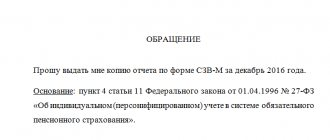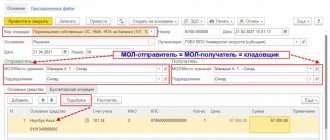Is it necessary to keep personal files of employees?
Maintaining personal files of employees is not mandatory for all employers.
Thus, it is mandatory to open personal files for civil servants. This is the requirement of the Law “On State Civil Service in the Russian Federation” dated July 27, 2004 No. 79-FZ. They contain personal data and other information related to entry into the civil service, its passage and dismissal from it, as well as information necessary to ensure the activities of the relevant government agency. As for commercial organizations (namely, we will talk about them further), they do not have a corresponding obligation. They can conduct personal affairs of staff on their own initiative. In practice, companies do just that. This allows you to systematize and streamline personnel document flow, and also helps you quickly find the necessary information about an employee at the right time. We will tell you below what requirements need to be met so that you don’t have to pay for all these amenities.
Is it necessary?
The set of documentation that is submitted by the applicant when applying for a job is specified by the Labor Code of Russia, and it does not include a questionnaire for a personal file.
However, the obligation to fill out the submitted document when applying for a civil service (municipal) is provided for by a by-law - a Regulation approved by Decree of the President of the Russian Federation No. 609 of May 30, 2005.
All able-bodied citizens applying for positions in municipal and state authorities must provide the employer with a duly completed application form on a unified form, which subsequently becomes an integral part of their personal file.
Employers whose legal entities are classified as other forms of ownership or organizational forms also often ask applicants to fill out the appropriate questionnaire.
The use of the presented document is due to the convenience of finding out certain information about the future employee, which facilitates the subsequent filling out of the personal file.
The questionnaire is a form with a list of questions.
However, if an identical set of questions is used for civil servants (personal data - surname, first name, middle name, date of birth, place of birth, residence, family composition, etc.), then private enterprises have the right to draw up the text of the questionnaire at their own discretion, taking into account the information necessary for the employer to clarify the information .
As a rule, the data from the application form must be confirmed by official documents submitted to the employer (identity card, education, marital status, presence of children, availability of special rights (for example, driver’s license), etc.), which is subsequently verified by security officers .
The questionnaire is filled out personally by the applicant, without the use of computer equipment. When submitting documents for employment remotely, it is allowed to submit a scanned copy of a completed and manually signed application form.
The information entered in the submitted form must correspond to reality, since the document is subsequently checked for the authenticity of the data and their incorrectness may cause a refusal to hire.
The questionnaire is also accompanied by a photo of the employee, which will be in his personal file.
All fields of the questionnaire are required to be filled out and the document must contain answers to all questions provided in it.
Composition of an employee's personal file in 2022
We probably all imagine a personal file in the form of a folder or file containing a certain set of documents about the employee and his work and their copies. As a rule, this is true. What should be in an employee's personal file? The employer determines its composition based on his own ideas and needs. Since managing personal affairs is a right, not an obligation, the procedure for their registration is established in each specific company. It is advisable to consolidate it in a local regulatory act.
Typically the list of documents in an employee’s personal file is as follows:
- application form to be filled out when applying for a job;
The employee application form for your personal file can be downloaded here.
- employment contract;
- job description;
- copies of employee orders.
IMPORTANT! Personal cards in the T-2 form do not need to be included in personal files. They are stored separately.
Now attention! Very often, copies of documents provided by the employee during employment are filed in the personal file: passport, SNILS document, TIN certificate, diplomas, etc. All these documents contain the person’s personal data. Therefore, it is impossible to store them just like that (so that they exist). At a minimum, you must obtain consent from the employee to process personal data indicating the specific purpose for which it will be used. At least Rostrud allows you to do this. But it’s better to stop collecting copies of personal documents altogether. We received the documents, recorded all the information necessary to formalize the employment relationship and returned everything to the employee. This will eliminate the risk of claims during inspections.
And of course, you should not keep copies of documents for dismissed employees. The Law “On Personal Data” dated July 27, 2006 No. 152-FZ allows the storage of personal data no longer than required by the purposes of their processing. And with the dismissal of an employee, the corresponding goal is lost.
IMPORTANT! For violations in working with personal data, Art. 13.11 of the Code of Administrative Offenses provides for quite significant fines. Roskomnadzor conducts checks of compliance with personal data legislation.
See also: “Photo pass may result in personal information fine.”
And by the way, keep in mind that personal files themselves also belong to personal data. Therefore, when working with them, you must act strictly within the framework of the law.
Find out more about the rules for working with personal data from the materials in our section of the same name.
Questionnaire structure
The application form for your personal file, which you can download below, consists of the following sections:
- Personal information about the candidate (full name, place of residence, age, citizenship, marital status, etc.).
- Information about education. Here you need to indicate which educational institutions and when the job applicant graduated, the direction of training, specialty and qualifications for the diploma, information about additional education, number and series of the diploma. This section may also include a question about knowledge of foreign languages and the degree of proficiency in them.
- Information about work experience and professional skills. Here the applicant indicates the positions in which he previously worked, the address and name of the organization, the date of hiring and the date of dismissal. This section is often presented in the form of a table, which makes it easier to perceive the information.
- Information about close relatives.
- Information about attitude to military duty.
- Information about identification documents (number and series of passport, international passport, TIN, insurance certificate of compulsory pension insurance - SNILS.
- Other additional information about the applicant for the position.
At the top of the first page of the application form, you must leave space for pasting a photo.
Formation of an employee’s personal file: sample 2022
When organizational issues and legal issues regarding personal matters have been resolved, all that remains is to compile and formalize them. Typically the order is as follows:
- A separate folder (or file) is created for each employee.
- Documents in the personal file are filed in chronological order as they are received, starting with admission documents (application, employment contract, admission order) and ending with a copy of the dismissal order.
- Each sheet of the case is numbered.
- No more than 250 sheets are filed in one volume (clause 4.20 of the rules for organizing the storage, acquisition, recording and use of documents of the Archive Fund of the Russian Federation, approved by order of the Ministry of Culture dated March 31, 2015 No. 526), if more documents have accumulated, a new volume is opened.
- Each incoming document is recorded in the internal inventory of the case.
A sample list of documents in a personal file and recommendations for its preparation can be found here.
The cases themselves are numbered and registered in the employee personal affairs journal (the form of the journal can be developed independently).
See also: “Nomenclature of HR Department Affairs.”
What documents will Trudoviks require in the event of an inspection? How to prepare them correctly and how long should they be stored? You will find answers to these and other questions in the Guide to Personnel Issues from ConsultantPlus. If you do not have access to the K+ system, get a trial online access for free.
General characteristics of the questionnaire as a personnel document
When selecting candidates for vacant positions, most companies necessarily conduct employee surveys. This is done for the purpose of a preliminary assessment of their professional qualities, level of education and experience, as well as determining priorities in future work. The questionnaires contain information about the employee’s biography, education, work experience and marital status.
At the same time, according to Art. 65 of the Labor Code of the Russian Federation, the employer does not have the right to demand from a citizen, when hiring, documents other than the list below:
- identification document;
- work book or form STD-R;
- Pension Fund certificate;
- military registration document;
- education document.
The employer has the right to receive any information other than what is in the above documents only with the written consent of the employee directly when communicating with him.
The questionnaire becomes part of the personal file only if the applicant is hired. If he receives a refusal, it is placed in a separate folder for subsequent personnel selection.
Storing personal files of employees in the HR department
In the HR department, personal files of employees are kept for the entire period of their work in the organization. When an employee resigns, the case is closed. No earlier than one year and no later than three years after the completion of the case, it is transferred to the archives of the organization.
When registering a case for storage, you need to:
- make stitching or binding in a cardboard cover with 4 punctures;
- number the sheets and attach an internal inventory;
- draw up a certification sheet on the form presented below;
- draw up the cover (title page), indicating on it, among other things, the date of completion of the case and the total number of sheets, taking into account the certification sheet.
The case is ready to be transferred to the archive.
The period for storing personal files of employees in the archive is strictly regulated.
According to Art. 22.1 of the Law “On Archival Affairs” dated October 22, 2004 No. 125-FZ, documents on personnel completed by office work before 01/01/2003 are stored for 75 years, after 01/01/2003 - 50 years. A personal file can only be destroyed when the storage period has expired. Personal files of managers are stored indefinitely (Article 445 of the Rosarkhiv List).
We talked in more detail about the storage periods for documents in an organization, as well as about the procedure for their destruction at the end of the storage period here.
Documents for creating a personal file
The exact list of forms included in a personal file is defined only for state and municipal organizations and institutions. For other companies, there is no strict list containing exactly what documents should be in the employee’s personal file. They can also use the existing list for the public sector.
It is advisable to start each personal file with a list of forms included in its composition. Documents included in employees' personal files are divided into several categories.
Documents provided when an employee joins the company:







